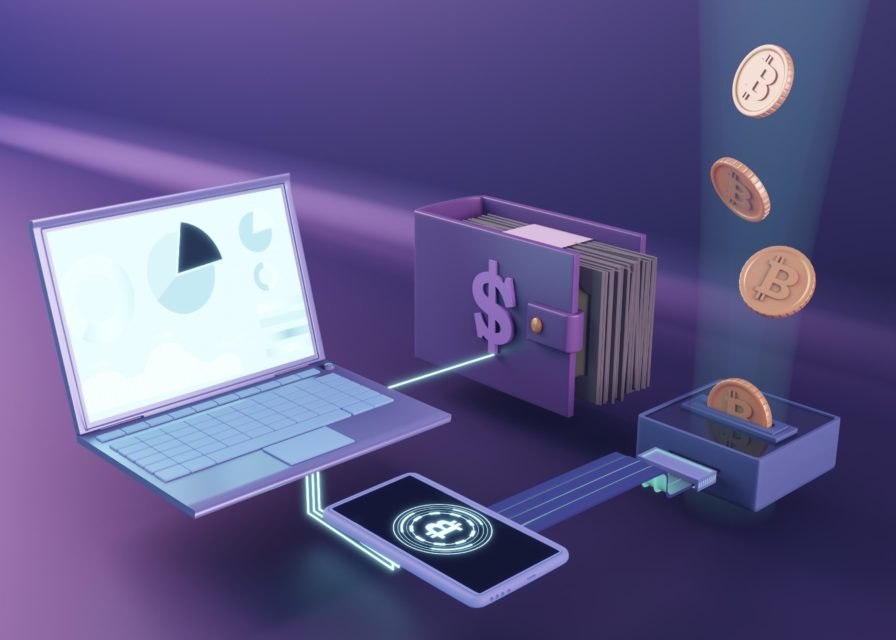An air-gapped wallet is a type of crypto wallet designed to be completely disconnected from the internet and any form of wireless communication. These wallets are generally considered more secure than other types of wallets.
What is an Air-Gap Wallet?
An air-gapped wallet is a type of cryptocurrency wallet designed to be disconnected from the internet and any form of wireless communication. Types of wireless communication that air-gapped wallets disconnect include Bluetooth, wifi, NFC (near field communication), and sometimes even USB drives.
The term “air gap” comes from the concept of having a physical “air gap” between the wallet device and any online network or wireless communication, providing an extra layer of security against attacks and exploits.

How Does an Air-Gap Wallet Work?
Air-gapped wallets rely on scannable QR codes or micro SD cards, which are small removable memory cards where transaction data can be stored, to facilitate transactions while disconnected from the internet and wireless communications.
Air-Gapped Wallet generally uses computer-based software applications that support Partially Signed Bitcoin Transactions (PSBTs) for Bitcoin or other similar partially signed transactions for different cryptocurrencies.
The working principle of these wallets is based on 3 steps:
Step 1: Creating a Partially Signed Bitcoin Transaction (PSBT)
Users usually set up a transaction on an online device with a Bitcoin wallet, specifying the recipient’s Bitcoin address and the amount to be sent.
This online device cannot fully sign the transaction because it does not have the user’s private key. Instead, a Partially Signed Bitcoin Transaction (PSBT) is created with all the transaction details except the digital signature signed by the user’s private key.
Step 2: Signing the Transaction
The unsigned transaction is transferred to the user’s air-gapped wallet by scanning the QR code. The transaction can also be recorded and stored as a file readable by a micro SD card.
Air-Gapped Wallet has the private key and signs the transaction offline. It is important to note that the air-gapped wallet is never connected to the internet or wireless communication, which in theory should keep the private key safe.
Step 3: Publishing the Transaction
The fully signed transaction is once again transferred back to the online device via a QR code or micro SD card.
The online device broadcasts the signed transaction to the Bitcoin network. The transaction is then processed and confirmed by miners and recorded on the blockchain like any other transaction.

Types of Air Gap Wallets
Air-gapped wallets can come in a variety of shapes, but the following are the most common types:
Air-gapped Hardware Wallets
These are specially created hardware devices designed to store private keys offline. These wallets generally facilitate transactions without exposing private keys to an online environment or wireless communication.
These devices usually have a digital screen to display transaction information and physical or touch buttons to manually confirm transactions.
Air-Gapped Computers
Users can also dedicate the entire computer to serving as an air-gapped wallet. This computer usually never connects to the internet and is only used to store private keys and sign transactions.
Unsigned transactions are typically transmitted to air-gapped computers via a USB stick, and signed transactions are exported the same way. This approach can be more complex and requires a higher level of technical skill.
Air-gapped Smartphones
Similar to air-gapped computers, a smartphone can also be used as an air-gapped wallet. Phones can be reset to factory settings and set up without any internet connection. The wallet software is installed via an SD card or similar. This can also be complex and will require advanced technical skills.
What Are the Risks and Limitations of Air-Gap Wallets?
Air-gapped wallets are highly secure, but that doesn’t mean they’re infallible. Because there are still potential vulnerabilities. If an air-gapped device is accidentally connected to the internet by the user, or if malware is introduced into the device via a USB stick (some air-gapped wallets use USB for charging and updates) or other media, the security of the device may be compromised.
There are also challenges in ensuring that the user has good physical protection of air-gapped wallets from theft, damage or loss. To protect themselves against such risks, users should follow best practices and keep backups of their keys securely. Finally, ensuring the correct and appropriate use of air-gapped wallets requires a high degree of technical knowledge.




